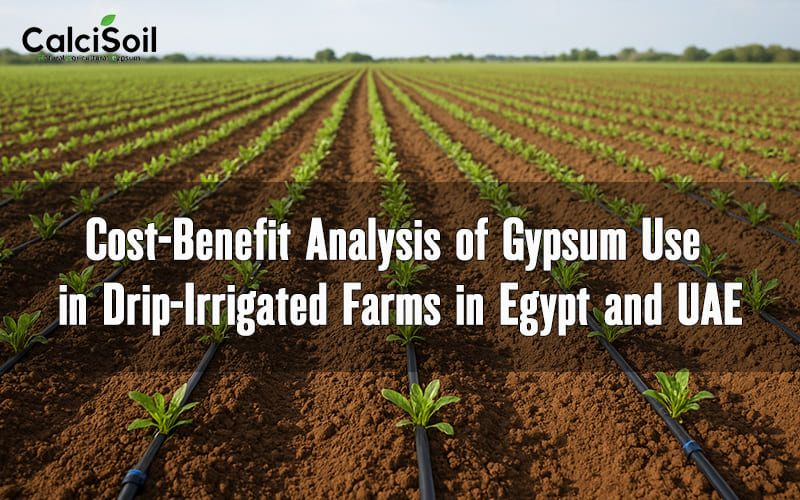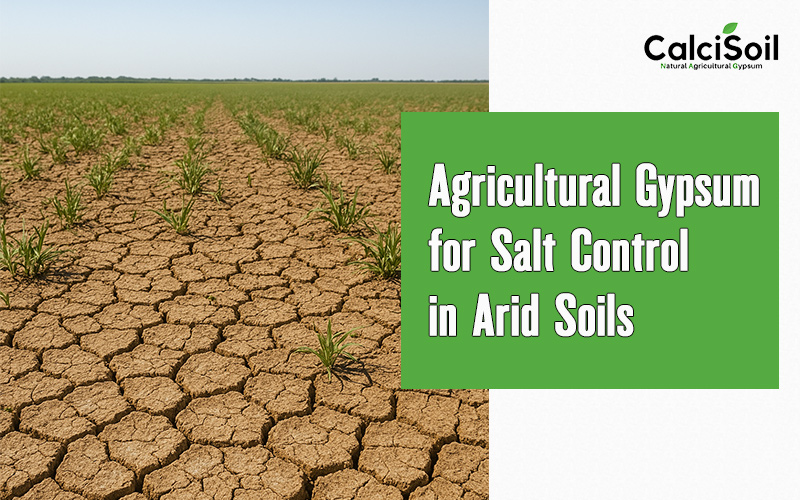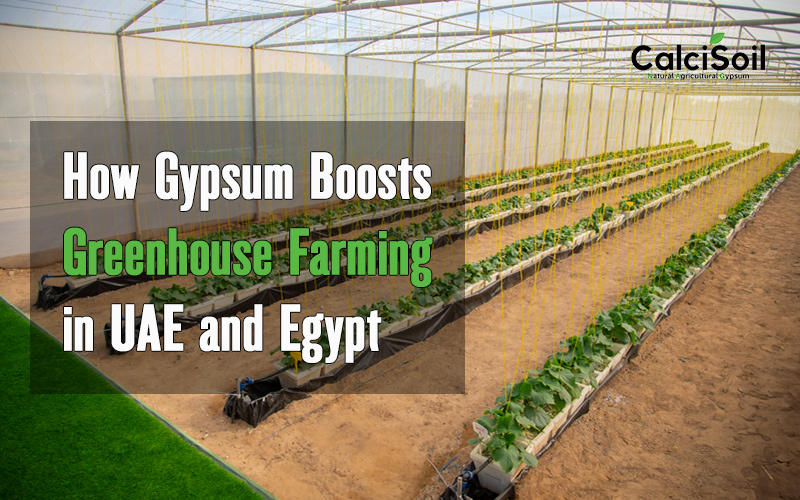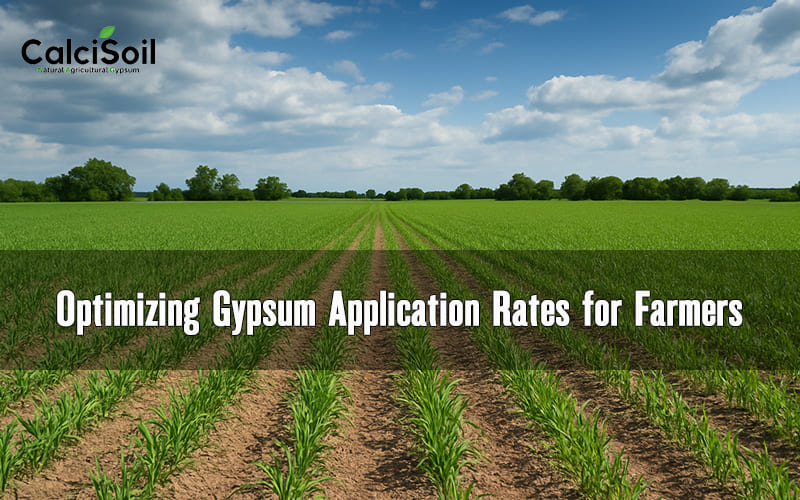Gypsum Cost Benefit Analysis for Drip Irrigation in Egypt & UAE

Gypsum Cost Benefit Analysis Drip-irrigated agriculture in Egypt and the UAE has expanded rapidly over the past two decades as farmers seek high-efficiency irrigation solutions suitable for arid climates. However, with the growing reliance on groundwater and marginal-quality irrigation sources, soil salinity and structural degradation have become major limitations. This challenge has pushed many growers […]
Agricultural Gypsum for Salt Control in Arid Soils

Agricultural Gypsum for Salt Control (A Practical Guide for Farmers Seeking to Improve Soil Health in Hot Dry Environments) Soil salinity is one of the most persistent and destructive challenges facing farmers and rangeland managers across arid regions such as the UAE, Saudi Arabia, Egypt, and North Africa. Intense temperatures, high evaporation rates, and saline […]
How Gypsum Boosts Greenhouse Farming in UAE and Egypt

Understanding Greenhouse farmingChallenges in Arid Regions Greenhouse farming in arid regions like the UAE and Egypt is a lifeline for producing fresh vegetables, herbs, and flowers throughout the year. These regions face intense sunlight, low humidity, saline irrigation water, and poor natural soil fertility. Inside greenhouses, the goal is to create a balanced environment that […]
Best Time to Apply Gypsum in Hot Climates

When and How to Apply Gypsum in Hot Dry Regions Understanding the Climate Challenge Farming in hot arid regions like the UAE, Egypt, and Saudi Arabia comes with one central challenge — water scarcity and soil degradation. These areas face high evaporation rates, saline irrigation water, and low organic matter. As a result, the timing […]
How Gypsum and Mulching Boost Soil Health in Dry Climates

How to boost soil health Farming in dry climates like the Middle East, North Africa, and arid parts of Asia presents unique challenges. Soils in these regions often suffer from poor structure, low organic matter, and high evaporation rates. Without proper protection, precious topsoil can be lost to wind erosion and crusting, while water evaporates […]
Gypsum in Desert Agriculture

Gypsum in Desert Agriculture: Challenge of Water Scarcity Water scarcity is one of the greatest challenges facing desert agriculture today. Farmers in arid regions such as the UAE, Egypt, and Saudi Arabia must grow crops with limited and often saline water supplies. Sandy soils, which dominate desert landscapes, have poor water-holding capacity and tend to […]
Optimizing Gypsum Application Rates for Farmers

Gypsum Application Rates: Science-Based Recommendations for Farmers Applying agricultural gypsum can deliver powerful improvements in soil structure, nutrient balance, and water infiltration. But like any soil amendment, its effectiveness depends on using the right amount. Too little gypsum may fail to solve soil problems, while too much can be wasteful or even counterproductive. By relying […]
Agricultural Gypsum with Organic Fertilizers: Synergies and Benefits

Agricultural Gypsum with Organic Fertilizers Soil management in modern agriculture is no longer about choosing one single amendment or fertilizer. Farmers are increasingly looking at integrated approaches that combine the best of different practices. Among these, pairing agricultural gypsum with organic fertilizers is gaining attention for the way it enhances soil health, nutrient availability, and […]
Gypsum for Managing Soil Salinity in No-Till Systems

Understanding the Challenge of Managing Soil Salinity Soil salinity is one of the most persistent obstacles farmers face in maintaining productivity, especially in semi-arid and arid regions. Salts accumulate over time due to irrigation practices, poor drainage, or natural soil composition. In no-till and reduced-tillage systems, where soil disturbance is minimized, managing salinity becomes even […]
How to Measure Gypsum Effectiveness on Your Field: A Farmer’s Guide

Why Measuring Gypsum Effectiveness Is Essential for Farmers Applying agricultural gypsum can bring big benefits to soil health, but how do you know it’s actually working? For many farmers, gypsum fertilizer is an investment meant to improve structure, supply calcium and sulfur, and reduce nutrient runoff. Without measuring gypsum effectiveness, you’re essentially guessing. By tracking […]

